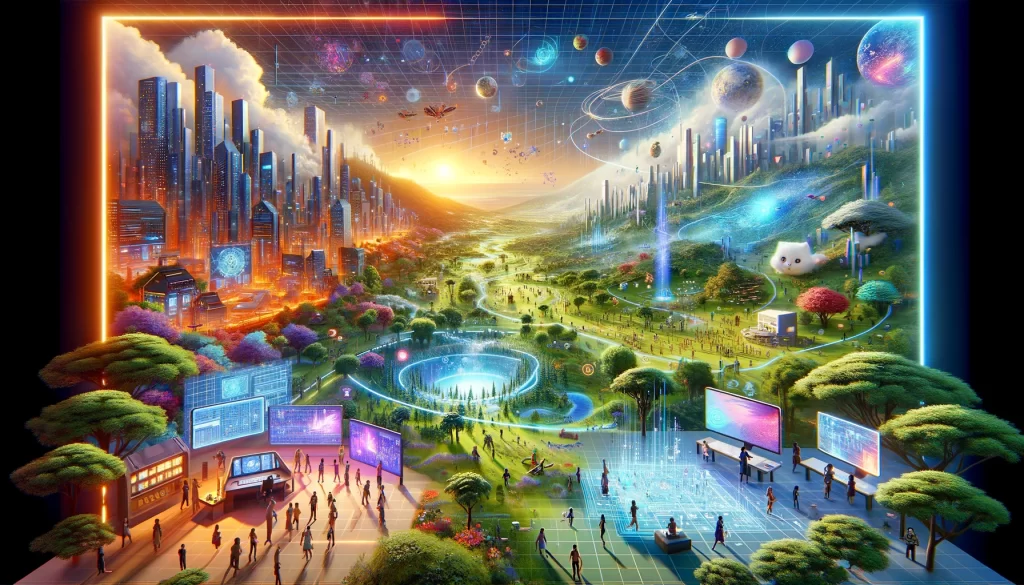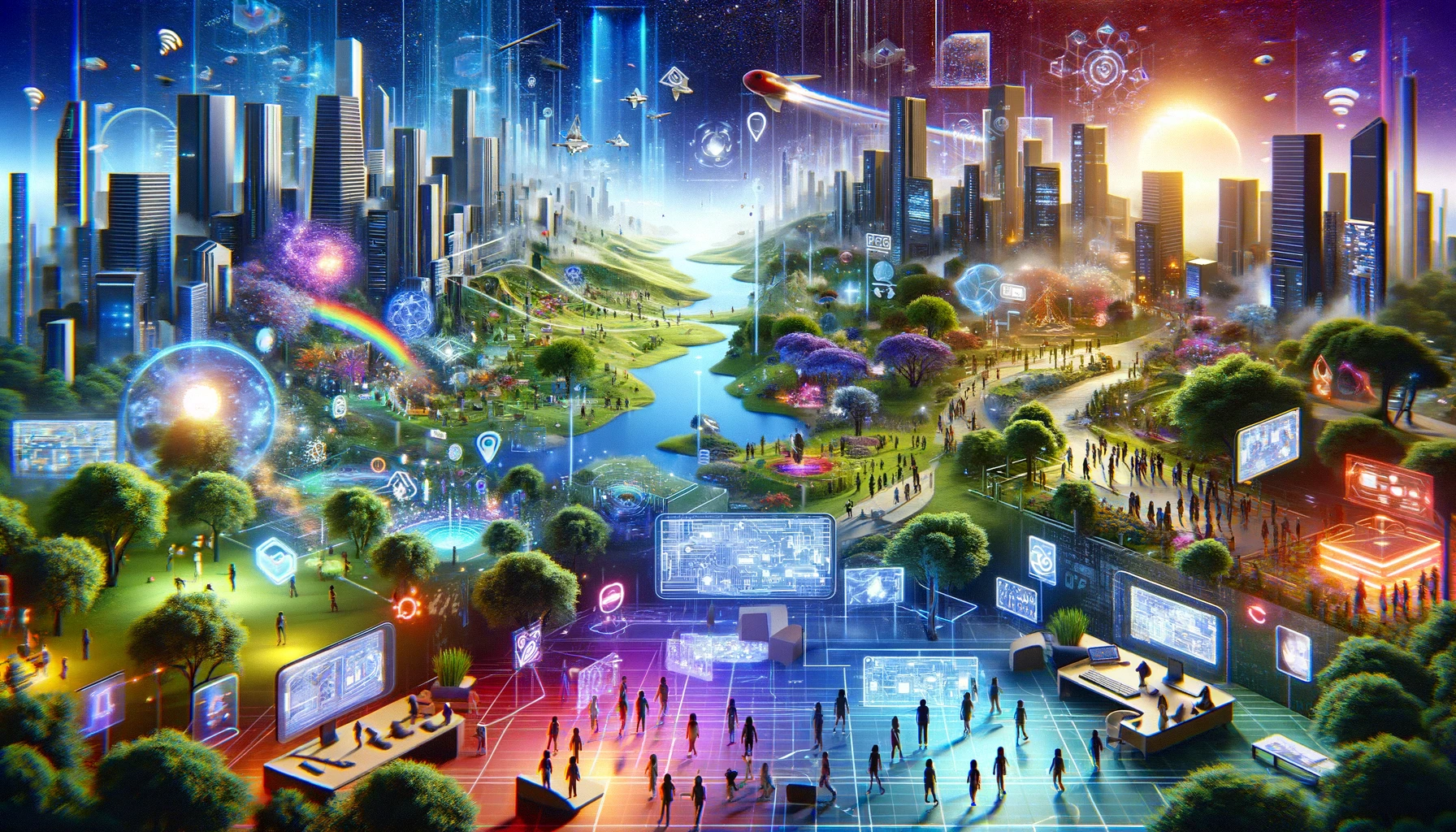The metaverse is a virtual world, a shared 3D space where users can interact, create, and explore. It is a platform for Virtual Reality, Augmented Reality, and Mixed-reality experiences.
What is the Metaverse and How Does it Work?
The metaverse is a virtual world that exists in the digital realm. It is a shared, persistent, and interactive 3D environment that is accessible to anyone with an internet connection. It is a place where people can interact with each other, explore, create, and share content. The metaverse is a place where people can express themselves, build relationships, and explore new possibilities.
The metaverse is made up of a variety of different platforms, such as virtual reality (VR), augmented reality (AR), and mixed reality (MR). These platforms allow users to interact with each other in a virtual space and the environment around them. For example, in VR, users can explore a virtual world and interact with objects and other users. In AR, users can view the real world through a digital overlay, while in MR, users can interact with both the virtual and real worlds.
The metaverse is powered by various technologies, such as artificial intelligence (AI), Blockchain, and the Internet of Things (IoT). AI enables the metaverse to be more interactive and responsive to user input. Blockchain technology allows for secure transactions and data storage. And the IoT allows for the connection of physical objects to the metaverse.
The Benefits of the Metaverse: Unlocking New Possibilities
The metaverse offers a variety of benefits to users. It provides a platform for people to express themselves, build relationships, and explore new possibilities. It also allows for creating virtual economies where users can buy and sell virtual goods and services. Additionally, the metaverse can be used to create virtual events, such as concerts, conferences, and classes.
The metaverse also offers a variety of educational opportunities. For example, users can explore museums, take virtual classes, and attend virtual conferences. Additionally, the metaverse can be used to create virtual simulations, which can be used to teach students about a variety of topics.
The metaverse also offers a variety of entertainment opportunities. For example, users can explore virtual worlds, play virtual games, and watch virtual movies. Additionally, the metaverse can be used to create virtual events, such as concerts, conferences, and classes.

The Challenges of the Metaverse: Overcoming Barriers to Entry
The metaverse is still in its early stages, and various challenges must be addressed before reaching its full potential. One of the biggest challenges is the lack of user adoption. The metaverse is still relatively new, and many people are unfamiliar with it. Additionally, the cost of entry can be prohibitive for some users.
Another challenge is the lack of content. The metaverse is still in its early stages, and limited content is available. Additionally, the available content is often of low quality. This can make it difficult for users to find engaging and entertaining content.
Finally, the metaverse is still in its early stages, and various technical challenges must be addressed. For example, the metaverse is still relatively slow, and there are a variety of bugs and glitches that need to be addressed. Additionally, the metaverse is still relatively insecure, and there is a need for better security measures.
The Future of the Metaverse: What Lies Ahead?
The metaverse is still in its early stages, but it has the potential to revolutionize the way we interact with each other and the world around us. As the technology continues to improve, the metaverse will become more accessible and more engaging. Additionally, the cost of entry will decrease, making it more accessible to a wider range of users.
The metaverse also has the potential to create new economic opportunities. For example, users can create and sell virtual goods and services and create virtual events. Additionally, the metaverse could be used to create virtual simulations, which could be used to teach students about a variety of topics.
Finally, the metaverse has the potential to revolutionize the way we interact with each other and the world around us. As technology improves, the metaverse will become more immersive and engaging. Additionally, the metaverse could be used to create virtual events, such as concerts, conferences, and classes.
The metaverse is still in its early stages, but it has the potential to revolutionize the way we interact with each other and the world around us. As the technology continues to improve, the metaverse will become more accessible and more engaging. Additionally, the cost of entry will decrease, making it more accessible to a wider range of users. With the right investments and support, the metaverse could unlock various new possibilities and create a more connected world.

